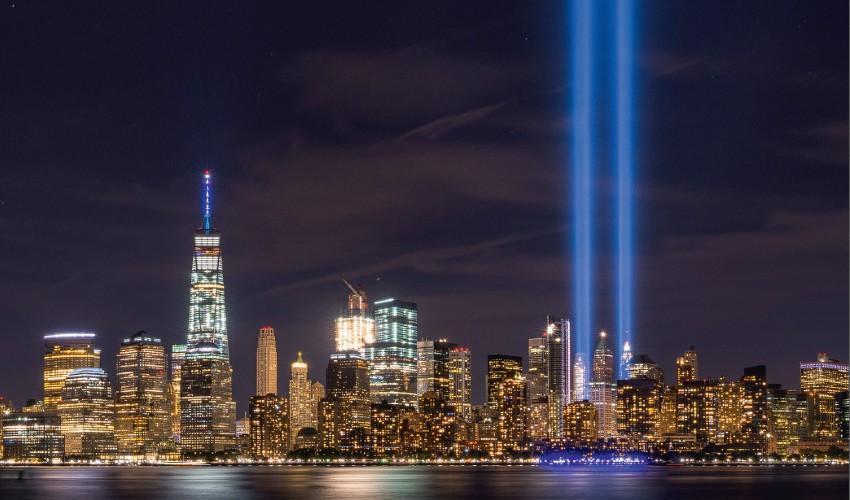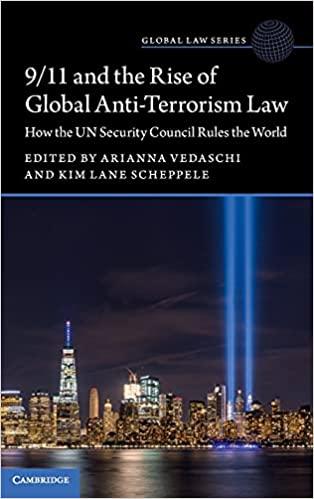
How Counterterrorism Changed the World After 9/11
A RECENT BOOK, COAUTHORED BY ARIANNA VEDASCHI, ANALYZES THE COMPLEX AND EVOLVING INTERACTION AMONG INTERNATIONAL, SUPRANATIONAL AND DOMESTIC BODIES IN FRAMING COUNTERTERRORISM MEASURES AND POLICIESIt has been twenty years since 9/11, when coordinated plane attacks hit the Twin Towers in New York. Ever since the fight on terrorism has been an international priority. In the book, 9/11 and the Rise of Global Anti-Terrorism Law, Arianna Vedaschi, Full Professor of Comparative Public Law at Bocconi University, and Kim Lane Scheppele, Princeton University, offer an overview of the fundamental changes that have occurred over the past twenty years. These changes not only influenced the field of counterterrorism, but also other areas that support the fight against terrorism, such as immigration law, financial regulation, national states of emergency, trial procedures, military organization, algorithmic decision-making, and regulation of the internet, among other things. Moreover, the volume gives a picture of the main actors involved in counterterrorism, from the United Nations to domestic bodies, and the relationship between them. The book was made possible also thanks the contributors who, coming from different backgrounds, provide a well-balanced view in terms of disciplines and experience. Among them, there are Martin Scheinin and Fionnuala Ní Aoláin, respectively former and current United Nations Special Rapporteur on the Protection and Promotion of Human Rights and Fundamental Freedoms While Countering Terrorism, and, among the junior scholars, Chiara Graziani, Academic Fellow at Bocconi University. Bocconi Knowledge publishes an excerpt from the book, courtesy of the authors and the publisher, Cambridge University Press.
 The fundamental changes that have occurred since 9/11 both articulate a new relationship between international and domestic law and also mark the declining hegemony of allegiance to human rights among political elites. This has happened in a surprising range of states after 9/11, including many states that are nowhere near the front lines of the antiterrorism campaign. States around the world have changed their laws and practices since 9/11 to fight terrorism, using a template that has been internationally forged, transnationally transmitted through international and regional associations, and locally adjusted to produce results that challenge basic constitutionalist principles at home.
The fundamental changes that have occurred since 9/11 both articulate a new relationship between international and domestic law and also mark the declining hegemony of allegiance to human rights among political elites. This has happened in a surprising range of states after 9/11, including many states that are nowhere near the front lines of the antiterrorism campaign. States around the world have changed their laws and practices since 9/11 to fight terrorism, using a template that has been internationally forged, transnationally transmitted through international and regional associations, and locally adjusted to produce results that challenge basic constitutionalist principles at home.While the substance of these changes is new, the use of international law as a basis for promoting domestic legal change is not. Public international law, especially since World War II, has had an immense influence on the development of domestic constitutionalism around the world. The development and spread of international human rights law were part of what we might call the first wave of public law globalization, and it has had a substantial effect on constitutional drafters, newly empowered constitutional courts, and elite opinion, particularly in the 1980s and 1990s as first Southern Europe and then Latin America and then post-Communist Europe entered the field of constitutional democratic states. Political coalitions in these places rallied around principles proclaiming the importance of parliamentary power, judicial independence and respect for human rights, principles articulated through international law debates and carried through transnational networks.
Since 9/11, however, a second wave of public law globalization, modeled on the first wave in the way it harnesses transnational organizations as a vector of change in diverse local settings, has suddenly appeared on the international scene. Global security law emanating from the United Nations (UN) Security Council led the way. In this second wave, national executives are empowered relative to local parliaments and courts; security services and police are linked across countries more tightly than they are linked to bodies that might supervise them within their own states; and surveillance and control of local populations are elevated above legal transparency and the individuation of suspicion as principles organizing the relationship of the state to the individual. The development of international security law after 9/11 follows a pattern of adoption we already know well from the first wave of public law globalization even though its substance is quite different.
In the first wave of public law globalization, starting with World War II and continuing up through 9/11, international human rights law provided a major support system for the development of constitutionalism around the world. The global human rights movement had given key domestic constituencies within a variety of countries power in domestic constitution-making processes to ensure a prominent place for rights and rights protection. Particularly in countries emerging from various forms of authoritarianism, from military dictatorships and from other antidemocratic regimes, the support provided by the international human rights community, backed by the power of international human rights law, had enabled reformers (themselves often veterans of these transnational movements) to develop world-class constitutions with deep and effective protections for rights-starved populations. The most widely ratified rights conventions – the Universal Declaration of Human Rights, the International Covenant on Civil and Political Rights, the International Covenant on Economic, Social and Cultural Rights – often worked their way directly into the wording of new constitutions as newly liberated populations came out from under repressive governments. Understandings of international monitoring bodies and transnational courts about the meaning and reach of rights were influential sources for new constitutionalists in animating rights within polities newly emerged from histories of abuse. Transnationally minded judges and legal scholars developed conversations across national borders about what rights should mean and these conversations developed into a transnational network of constitutional monitoring bodies (constitutional courts, human rights commissioners, national ombudspersons) that look beyond national borders for inspiration. The transnational human rights model put respect for human dignity front and center, and then added a dense set of rights guarantees. It was guarded by an active judiciary that attempted to ensure that states complied. The new constitutionalism that rose in the period between the end of World War II and 9/11 (speeded up at the end of the Cold War) would have been impossible were it not for the transnational coordination provided through the instruments, institutions, and activists that constituted and advocated for international human rights law. Of course, the reality of the rights-respecting revolution fell far short of the aspiration, but there can be no doubt that the transnational human rights movement had a large effect on the new blueprints of government and moved newly democratic governments in the direction of increased human rights protections.
The international struggle against terrorism, turbocharged after 9/11, launched a second wave of public law globalization that pushes, substantively speaking, in the opposite direction from the first wave. Twenty years later, we can appreciate that it was perhaps even more powerful than the first wave of public law globalization.
by Arianna Vedaschi and Kim Lane Scheppele
